1. Lime Jell-O Salad
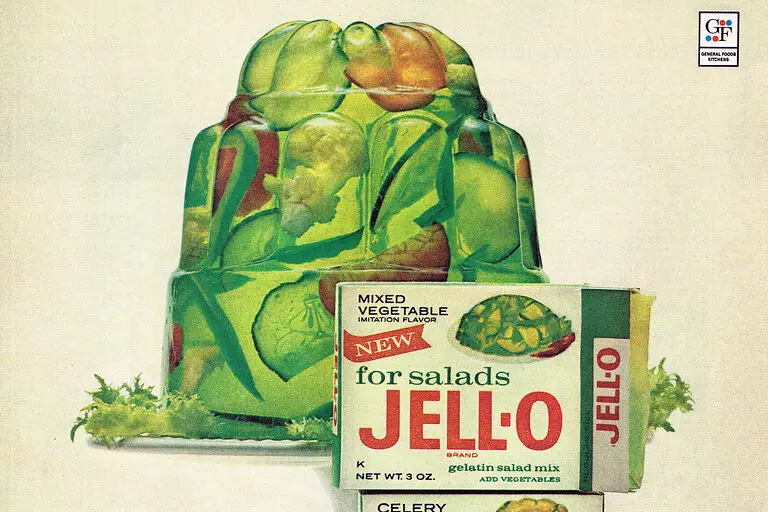
In the 1960s, Jell-O wasn’t just dessert, it was practically its own food group. Lime Jell-O salad took things to another level by combining gelatin with shredded carrots, celery, and sometimes even olives. It sounds like something straight from a chemistry lab, where the ingredients got mixed up with what should have gone into the main dish instead of dessert. Housewives proudly presented these green, wobbly creations at potlucks, convinced they were modern and chic.
When you picture it, the bright green gelatin encasing floating orange carrot shreds looks almost alien. Some recipes even threw in cottage cheese for good measure, making it even stranger. It was the era’s idea of health food, since it had vegetables “hidden” in it. Still, most of us today would probably pass on a spoonful unless we were feeling brave.
2. Crown Jewel Dessert
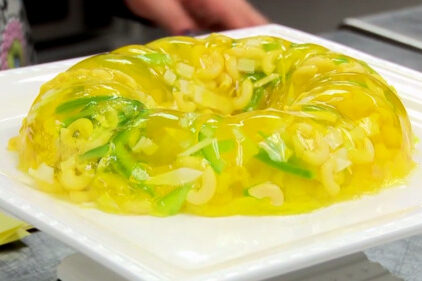
This one really did look like a stained-glass science project. Crown Jewel dessert was made by preparing multiple flavors of Jell-O, cutting them into cubes, then suspending the colorful blocks inside yet another layer of lemon gelatin mixed with whipped cream. It ended up resembling a laboratory experiment gone flashy, with rainbow blocks trapped in a gooey substance.
The recipe came straight from Kraft’s marketing team, who wanted to make gelatin look glamorous. While it was fun to look at, the texture of spongy cubes surrounded by creamy gelatin was confusing for the taste buds. Kids might have loved the colors, but not everyone was a fan once they took a bite. Today, it’s more admired for its looks than its flavor.
3. Aspic with Vegetables
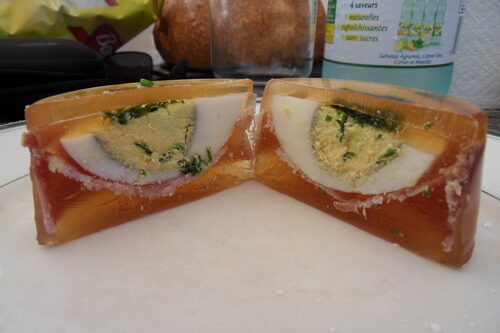
Aspic was the pinnacle of “fancy” in the ’60s, but it was also one of the most questionable. Essentially, it was meat stock or tomato juice turned into a clear gelatin mold that trapped vegetables or seafood inside. You’d find peas, carrots, or even boiled eggs suspended in a shimmering dome that looked more like a science experiment than dinner.
People thought it was elegant because it required effort and special molds. But biting into something cold, gelatinous, and savory was not always a pleasant surprise. While it might have looked like a conversation piece at the table, the taste often left guests politely nibbling rather than digging in. These days, aspic is rarely seen outside of retro cookbooks.
4. Ham and Banana Hollandaise
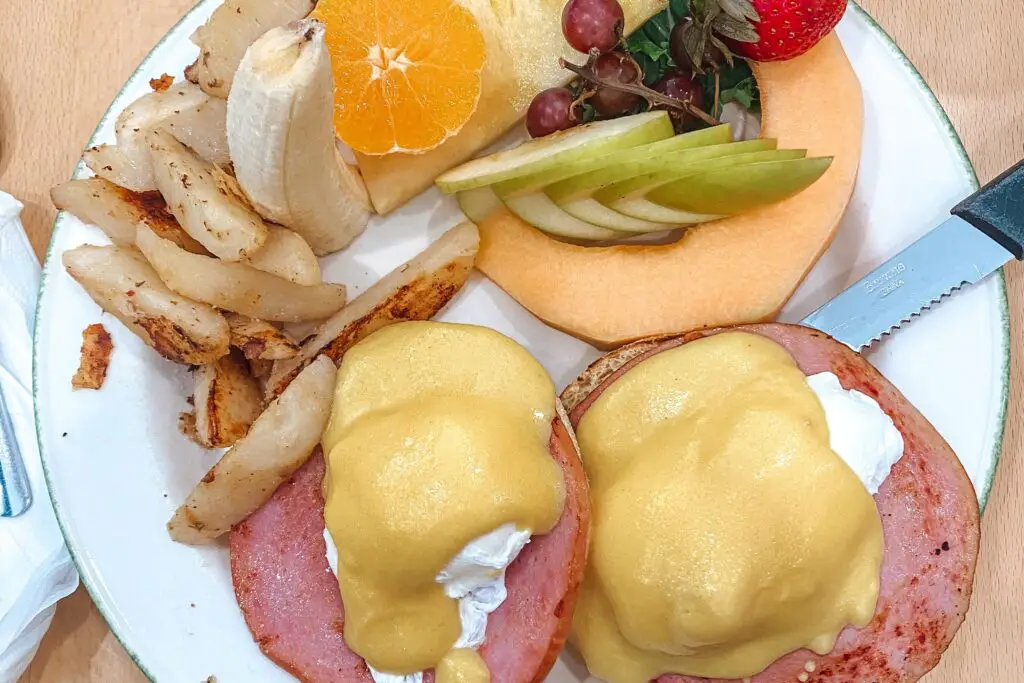
This dish is exactly as odd as it sounds. The recipe called for wrapping slices of ham around bananas, placing them in a baking dish, and then smothering the whole thing with Hollandaise sauce. Sweet and savory combinations can work, but this one leaned more toward confusing than delicious.
Magazines promoted it as a clever “continental” dish, but most modern cooks would hesitate before trying it. The bananas turned mushy in the oven, mixing with salty ham and buttery sauce in a way that baffled taste buds. It was one of those recipes that looked experimental, and maybe it should have stayed that way.
5. Frosted Ribbon Loaf
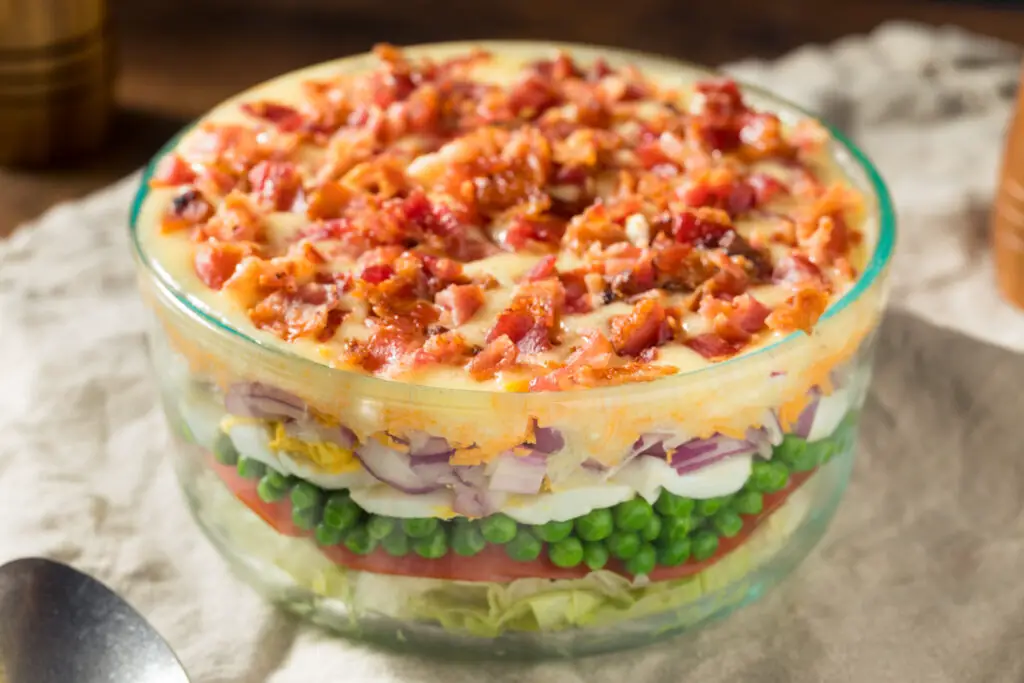
At first glance, frosted ribbon loaf might have looked like a festive cake. But once you sliced into it, you’d discover layers of sandwich fillings like ham salad, chicken salad, or egg salad stacked like a layer cake. To top it off, the whole loaf was “frosted” with cream cheese whipped into a spreadable consistency.
The pastel decorations made it look party-ready, but biting into what looked like cake only to taste mayonnaise-based fillings could be quite a shock. It was the ultimate bait-and-switch of the era. Guests might have smiled politely, but secretly wished it had been actual cake. Still, it was considered a showstopper in the world of ’60s entertaining.
6. Tomato Soup Cake
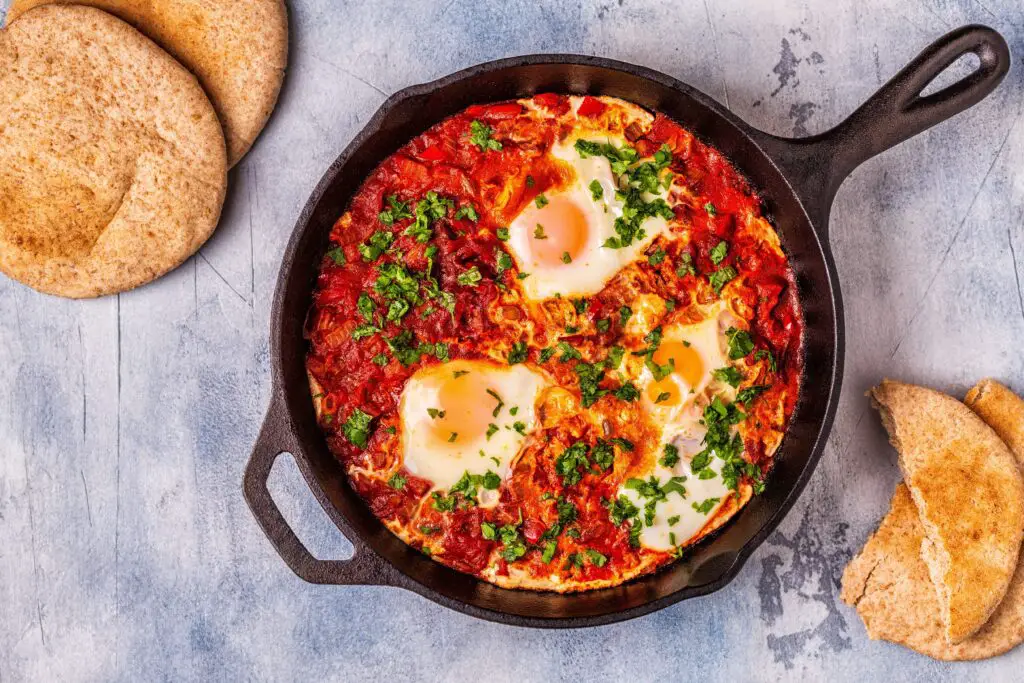
Yes, you read that right. Tomato soup cake was a popular recipe that turned a can of condensed tomato soup into a spice cake. The soup was mixed with flour, sugar, spices, and sometimes raisins or nuts to create what many people swore was a moist and flavorful dessert.
The idea was to stretch pantry staples into something impressive, but the reddish batter looked questionable before baking. Once baked, it smelled like cinnamon and cloves, masking the tomato flavor, but knowing what went into it made some people hesitate. It was proof that resourcefulness sometimes walked a fine line with strangeness.
7. Bologna Cake
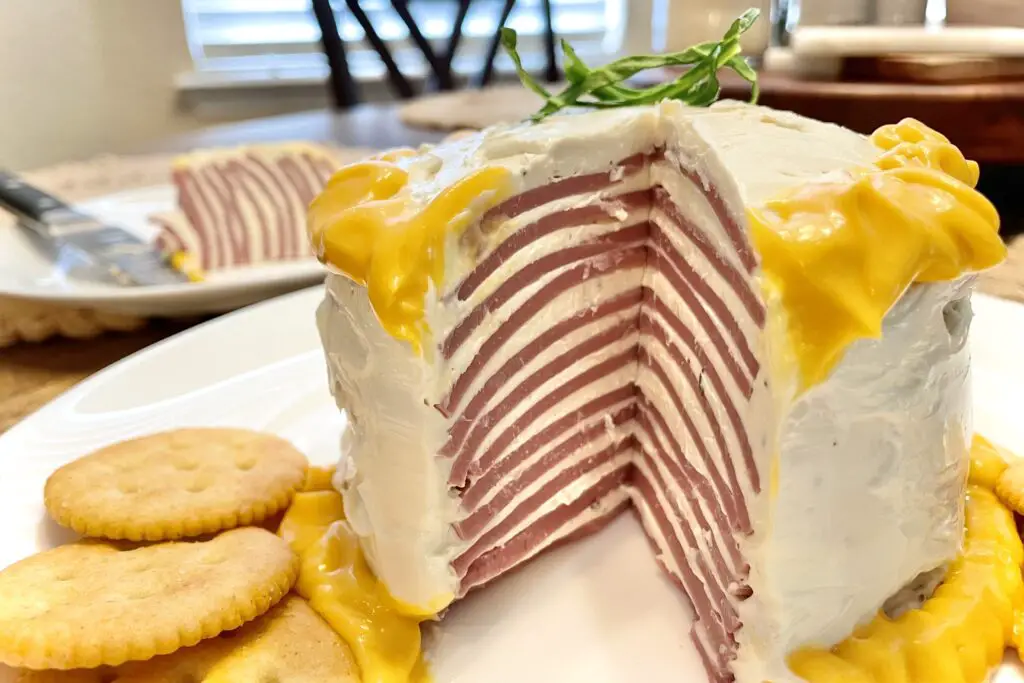
If the frosted ribbon loaf wasn’t bizarre enough, the bologna cake really took things up a notch. This dish stacked slices of bologna like layers of a cake, with cream cheese spread in between. Once built, it was frosted with even more cream cheese and decorated like a dessert.
It was often sliced and served with crackers as an appetizer, but the sight of a “cake” made entirely of lunch meat raised eyebrows. It looked like a dare from a science fair rather than a serious dish. Still, it was easy to make and cheap, which meant it found its way onto plenty of buffet tables.
8. Perfection Salad
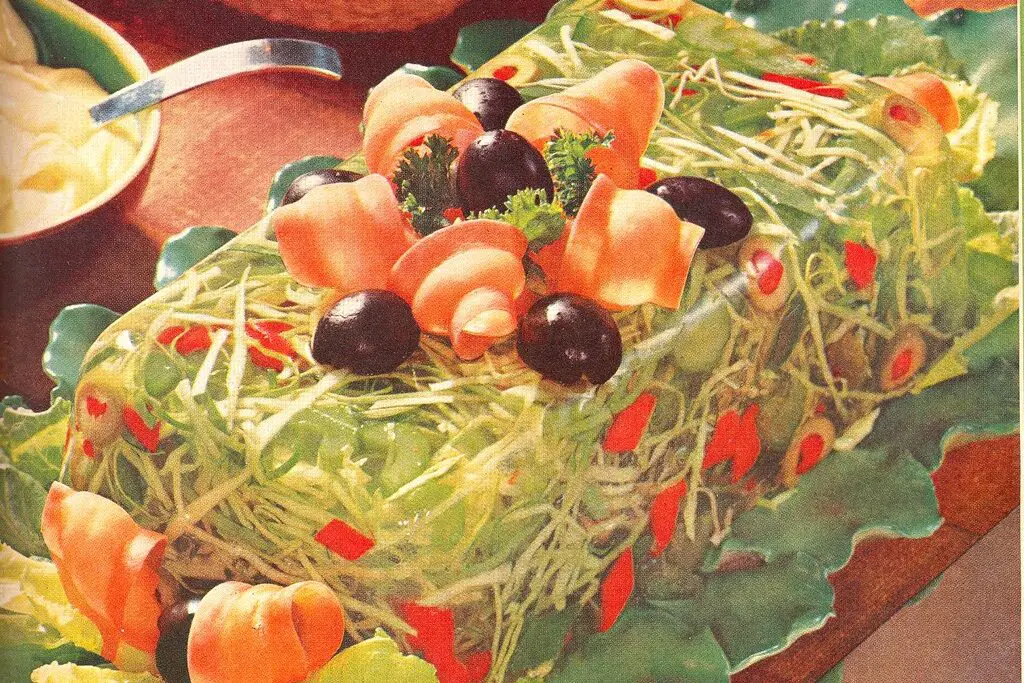
Perfection Salad was another gelatin-based recipe, and despite its name, perfection might not be the word most people would use. It combined lemon Jell-O with shredded cabbage, carrots, celery, and green peppers, creating a mold of crunchy vegetables trapped inside a quivering shell.
It was meant to be a lighter alternative to heavier dishes, but the mix of sweet lemon gelatin with raw vegetables created an odd clash of flavors. Still, it photographed well for cookbooks, and that seemed to be the point. It was a salad that looked like an experiment and tasted like one too.
9. Spaghetti Pie
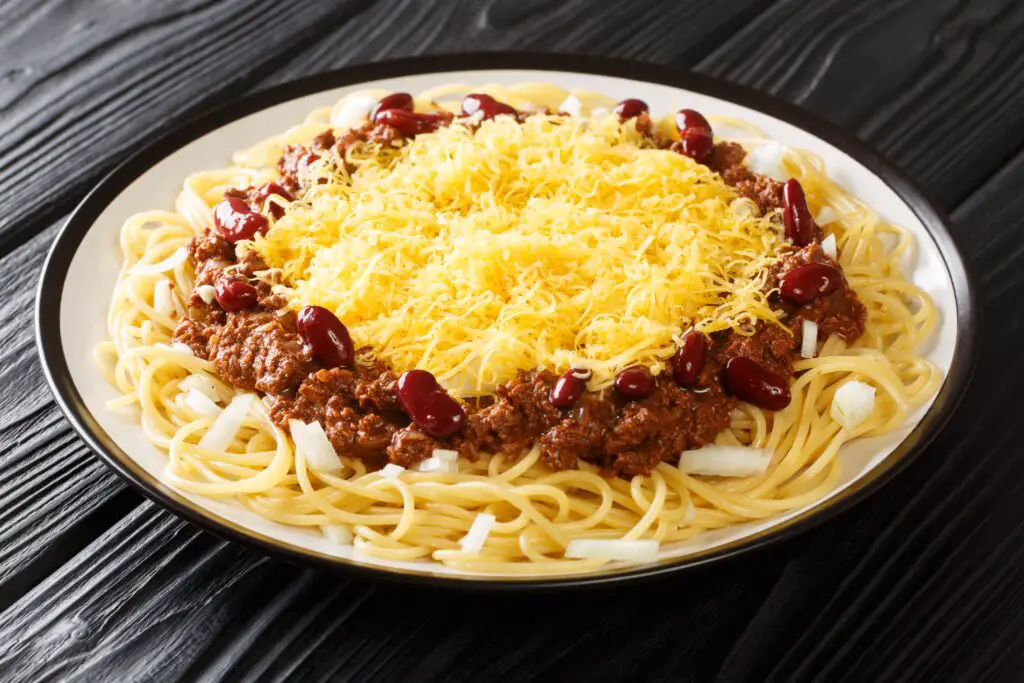
Spaghetti pie was a way to “modernize” leftovers, but the results were often strange. Cooked spaghetti was mixed with eggs and pressed into a pie pan to form a crust. Then, it was filled with meat sauce, cheese, and baked until firm.
It may not sound too wild at first, but the pie-like presentation made it look more like an experiment in food architecture. The noodle crust could be dry and rubbery, leaving the whole thing tasting like a failed science project. While it was creative, it never became a lasting classic.
10. Pineapple and Cottage Cheese Mold
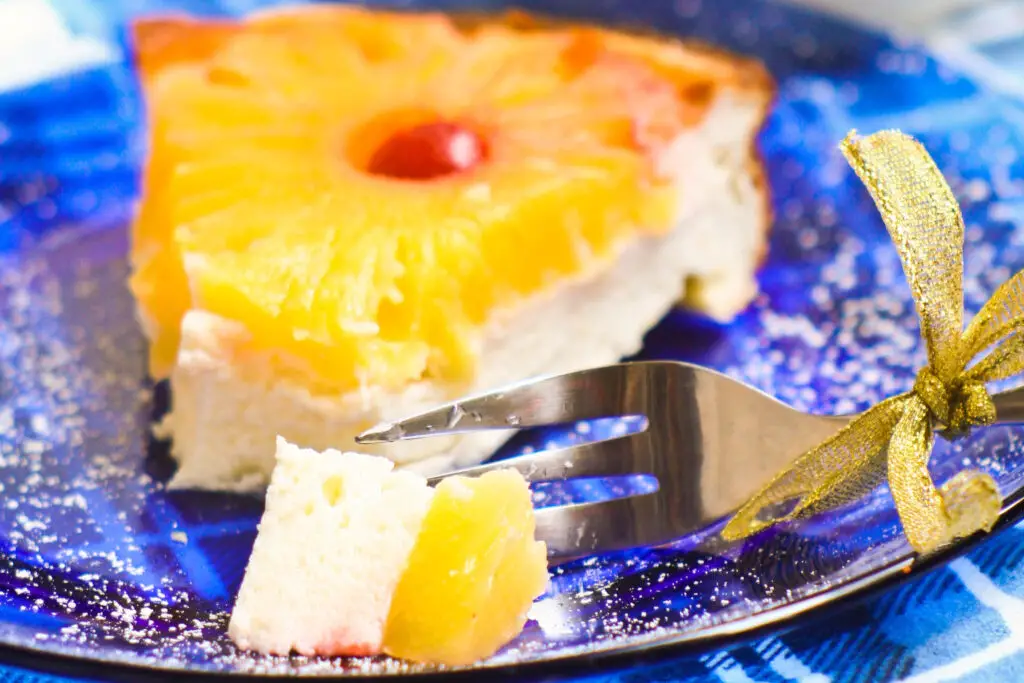
Fruit and cottage cheese were already a staple of ’60s diets, but when combined into a gelatin mold, things got unusual. Recipes called for pineapple chunks, cottage cheese, and whipped cream, all set together in lemon Jell-O. The result was a sweet-savory dish that wobbled in ways food probably shouldn’t.
It was considered a refreshing salad for luncheons, though many guests likely picked around the cottage cheese. The mix of tart pineapple with creamy curds in gelatin had an unsettling texture. It looked impressive on the table, but eating it was another matter.
11. Hot Dr. Pepper with Lemon
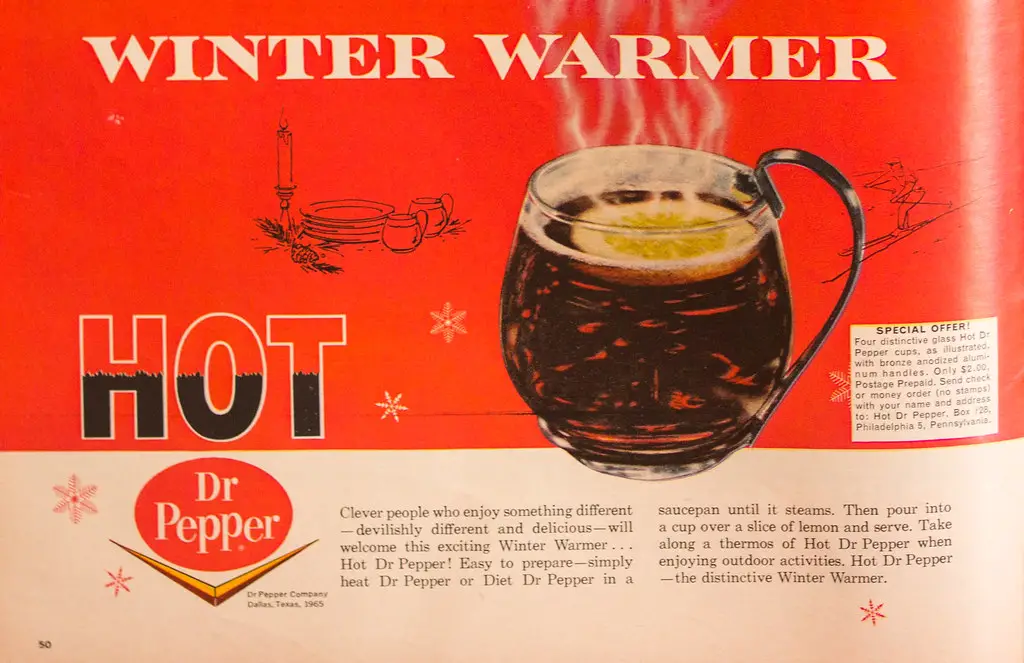
This one wasn’t food, but it deserves a mention for its pure strangeness. In the ’60s, Dr. Pepper ran ads encouraging people to heat up their soda in a saucepan, pour it into mugs, and serve it with a slice of lemon. They marketed it as a cozy winter drink, like coffee or tea.
The science experiment feel came from the idea of heating carbonated soda, which fizzed and bubbled in odd ways. Some people swore it was delicious, while others found it unsettling. The lemon slice floating in steaming Dr. Pepper was definitely a conversation starter, if nothing else.
12. Chicken à la King in Pastry Shells
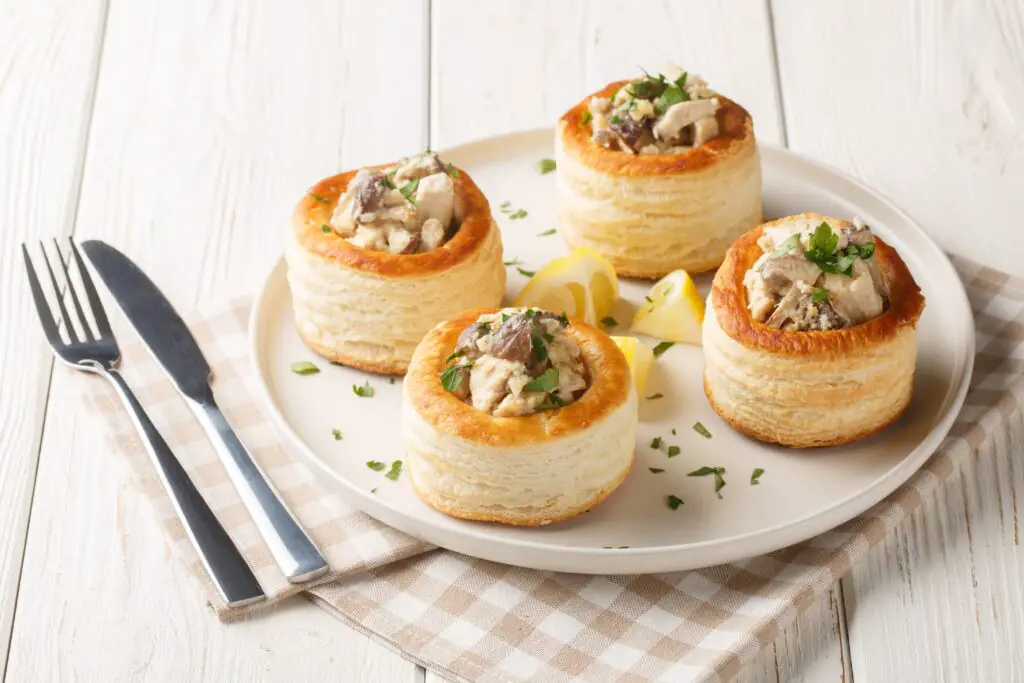
Chicken à la King was a creamy chicken dish that by itself wasn’t too strange, but in the ’60s it often got the “presentation treatment.” That meant serving it in molded pastry shells or even inside hollowed-out pineapples. The result was a dish that looked like it belonged in a lab display more than a kitchen.
The combination of rich chicken sauce with a sweet pineapple shell created some questionable flavor pairings. But it was considered very elegant at the time, especially for entertaining. Looking back, it feels like one of those experiments where the presentation overshadowed the actual taste.
